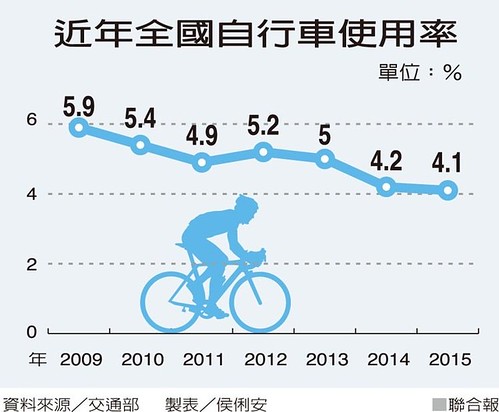
The United Daily the Liberty Times both have reports detailing the Ministry of Transportation's report on a steady decline in bicycle use nationwide.
Taiwan, which often bills itself as the "bicycle kingdom" in promotional material, is experiencing a contraction in the use of public bicycles as well as bicycles for transportation.
The key factor, as pointed out by the Ministry of Transportation, was the easing of fuel prices over the past year, which has encouraged people to opt for the use of personal motorized transportation for shorter trips. Many respondents also cited "convenience" as a factor.
While bicycle use has grown in Taipei, New Taipei City, Hsinchu, Hualien and Pingtung, ridership has fallen elsewhere, negating any gains. According to the data, Yilan, Yunlin, Miaoli, Kaohsiung, Taoyuan, Taichung and Tainan all experienced negative growth in ridership over the past seven years. The Ministry of Transportation feels the expected rise in gas prices could again fuel growth, but some experts are less optimistic.
It is also interesting to look at the areas that experienced the greatest growth and to wonder about infrastructure spending and government subsidies in those areas as they correlate to political alignment.
The study also found that riders between 15-18 years of age were most likely to participate in bike-share programs--a statistic supporting the assertion that Taiwan's bike share programs do little to cut emissions.
In most areas, there is still no real space for bicycles on the roadways, making commuting by bicycle inconvenient, impractical and dangerous.
While Taiwan's bicycle programs have been highly touted in the international press, this report really serves to highlight the disparities between Taiwan's far north, and the rest of the country, as well as how few reporters ever venture out of Taipei.
It could also be that the bike trend is over in Taiwan.

